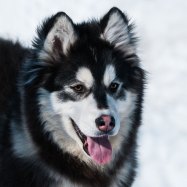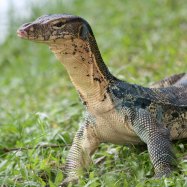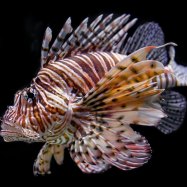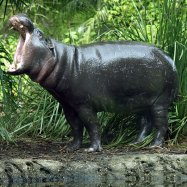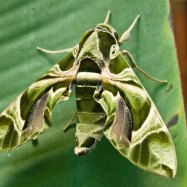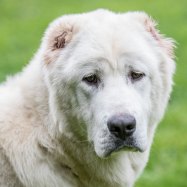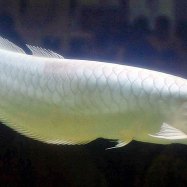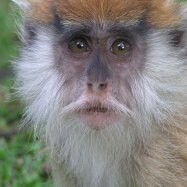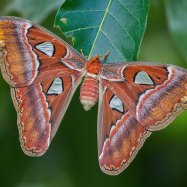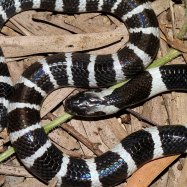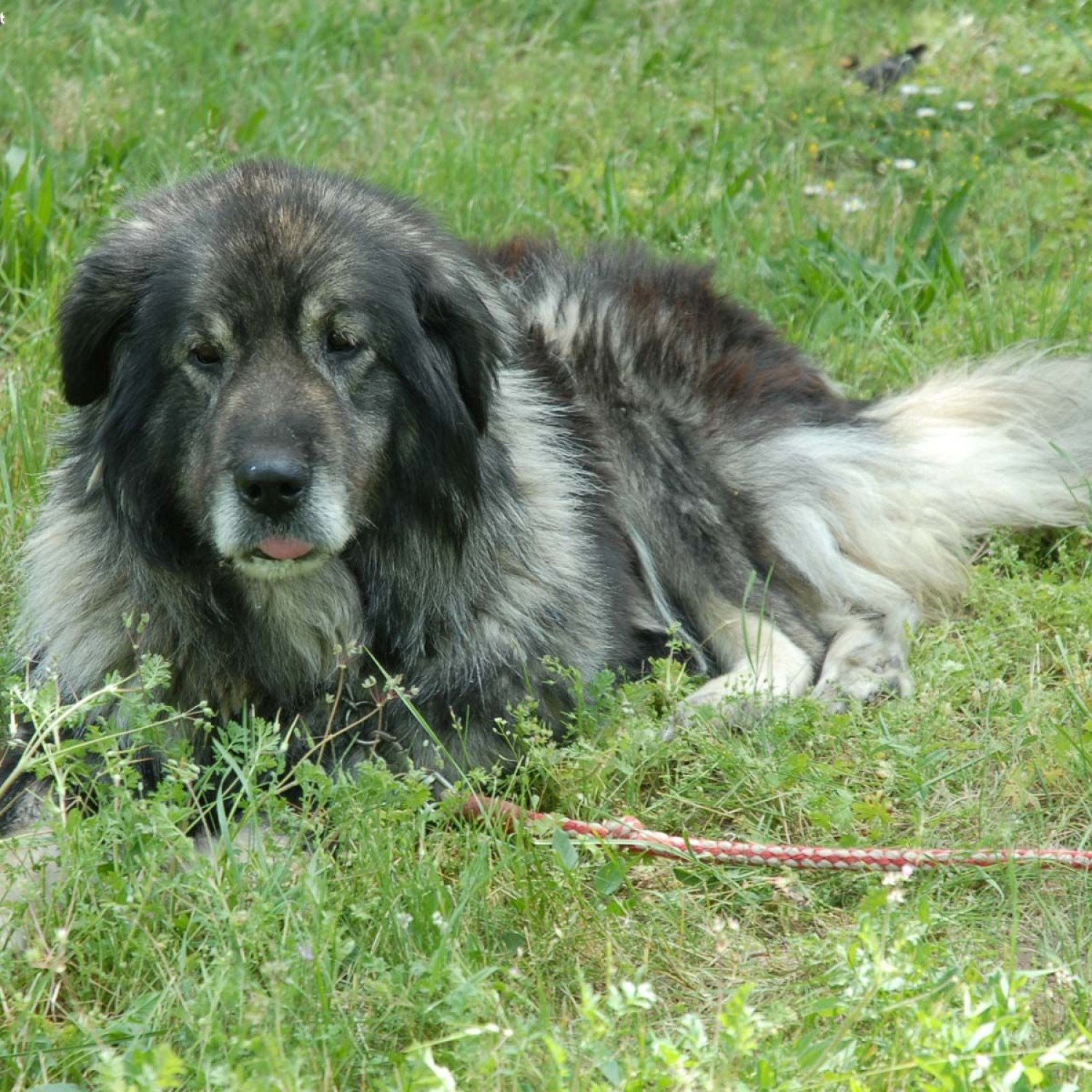
Sarplaninac
60-75 cm (23.6-29.5 in)
The Sarplaninac, also known as the Yugoslavian Shepherd Dog, is a powerful and muscular dog breed native to Southeast Europe. With a height of 60-75 cm and belonging to the Canidae family, these dogs are well-suited for guarding and protecting livestock. Their strong build and thick coat make them ideal for harsh mountain climates. Considered a national treasure in their homeland, the Sarplaninac is a loyal and protective companion for any family. #Sarplaninac #YugoslavianShepherdDog #SoutheastEurope
Animal Details Summary:
Common Name: Sarplaninac
Kingdom: Animalia
Habitat: Mountainous regions
The Majestic and Mighty Sarplaninac: A Look into One of the Most Remarkable Mountain Dogs
In the mountainous regions of the Balkan Peninsula, one can come across a grand and powerful canine creature that is highly respected and revered by the locals – the Sarplaninac. This remarkable breed of dog, also known as the Illyrian Shepherd Dog, has been playing a crucial role in protecting livestock and families in the rugged landscapes of the Balkans for centuries. With its sturdy and muscular build, fierce loyalty, and keen sense of guarding, the Sarplaninac is truly one of the most adaptable animals in the world.The Basics: Naming and Classification
Scientifically known as Canis lupus f Sarplaninac. dalmaticus, the Sarplaninac belongs to the animal kingdom, Chordata (meaning animals with a spinal cord), and the class Mammalia (mammals). It falls under the order Carnivora, with a diet mainly consisting of meat, making it a carnivore. It belongs to the family Canidae, which includes other well-known canines such as wolves, foxes, and coyotes. The Sarplaninac is also referred to as the Macedonian Sheepdog, Illyrian Dog, and Yugoslavian Shepherd Dog.Origins and Geographical Distribution
As the name suggests, the Sarplaninac originated from the Sar Mountains, a rugged and remote region in the Balkans that mainly covers Macedonia and Montenegro. However, the breed is also found in other mountainous areas in Southeast Europe, mainly in countries like Albania, Kosovo, and Serbia. Despite living in harsh and unpredictable terrains, the Sarplaninac has adapted remarkably well to its surroundings, making it a crucial part of the local landscape and culture.Habitat and Behavior
Being mountain dogs, Sarplaninacs naturally thrive in high altitudes and rough terrains. They are most commonly found in pastures and steep hills, where they live and work alongside their human families Sharp Shinned Hawk. Due to their natural herding instincts and territorial nature, Sarplaninacs are known for their strong guarding behavior, making them a fantastic choice for protecting livestock and property. They are also highly independent and intelligent, which enables them to make quick decisions when faced with a predator or intruder.Although fierce and protective when it comes to guarding their territory, Sarplaninacs are known to be loving and gentle towards their human families. They are also highly affectionate towards children and are known to be very tolerant of them. However, they require proper socialization and training from a young age to ensure they do not become overly aggressive towards other animals or unfamiliar faces.
Physical Characteristics
With their impressive body size and muscular build, it is not hard to see why the Sarplaninac is considered one of the most magnificent-looking mountain dogs. They stand at an average height of 60-75 cm (23.6-29.5 inches) and can weigh anywhere between 35-45 kg (77-99 pounds). The breed's powerful frame allows them to navigate through the rough mountain terrain with ease and agility.The Sarplaninac's coat is another remarkable feature of the breed that helps it withstand the harsh climate of the mountains. Their double coat consists of a dense and weather-resistant undercoat and a longer, rougher topcoat. This unique coat provides excellent protection against the cold and keeps them dry in wet weather. The color of the coat varies but is predominantly white or gray, with occasional markings of black or brown.
Feeding and Diet
As mentioned earlier, Sarplaninacs are strict carnivores, which means their diet primarily consists of meat. In their natural habitat, they may feed on small prey like rodents and birds. However, when living with humans, they are typically fed with high-quality dog food that is specifically formulated for their dietary needs. It is essential to ensure they have a balanced and nutritious diet to support their active lifestyle and optimal health.The Sarplaninac in the Modern World
The Sarplaninac may have originated from ancient times, but their significance and relevance in today's world are undeniable. With their natural guarding abilities and fierce loyalty, they are still widely used for protecting livestock and properties. However, they have also become popular companion dogs, thanks to their unwavering devotion and loving nature.In recent years, the Sarplaninac has gained significant recognition and popularity in other parts of the world. They are particularly popular in the United States, where they are used as working dogs in ranches and farms. With proper training and socialization, they make excellent guard dogs for both personal and commercial purposes.
In Conclusion
In the rugged landscapes of the Balkans, the Sarplaninac has been a loyal and faithful companion to countless families and a crucial part of the local culture. This remarkable breed has shown remarkable adaptability, loyalty, and strength, which has earned them a well-deserved reputation as one of the most magnificent and capable mountain dogs in the world. As the Sarplaninac continues to make its mark in different parts of the world, it remains a testament to the incredible bond between humans and animals, and the remarkable abilities nature has bestowed upon different species.

Sarplaninac
Animal Details Sarplaninac - Scientific Name: Canis lupus f. dalmaticus
- Category: Animals S
- Scientific Name: Canis lupus f. dalmaticus
- Common Name: Sarplaninac
- Kingdom: Animalia
- Phylum: Chordata
- Class: Mammalia
- Order: Carnivora
- Family: Canidae
- Habitat: Mountainous regions
- Feeding Method: Carnivorous
- Geographical Distribution: Balkan Peninsula, primarily in the region of Sar Mountains
- Country of Origin: Macedonia
- Location: Southeast Europe
- Animal Coloration: Varies, predominantly white or gray
- Body Shape: Large and muscular
- Length: 60-75 cm (23.6-29.5 in)
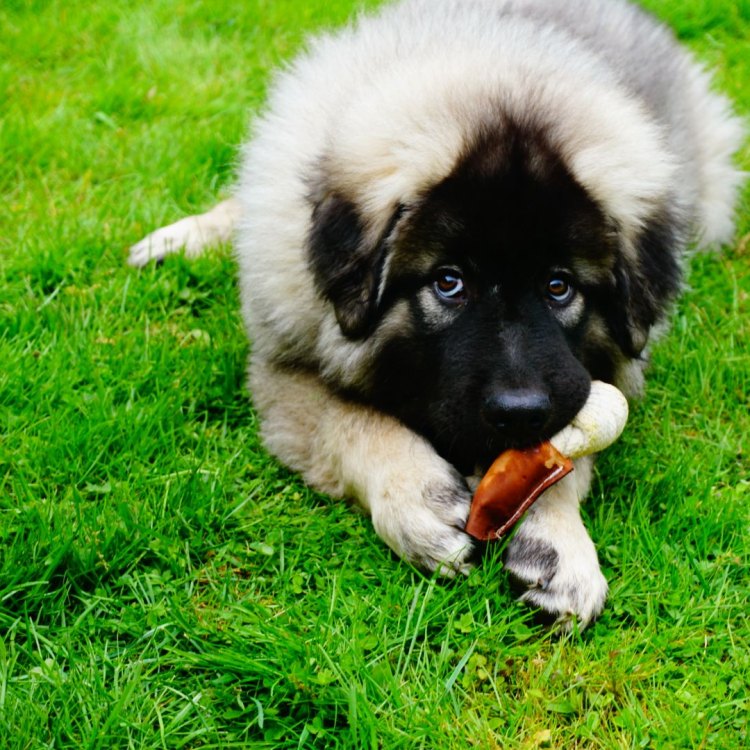
Sarplaninac
- Adult Size: Large
- Average Lifespan: 10-12 years
- Reproduction: Sexual
- Reproductive Behavior: Monogamous
- Sound or Call: Deep, loud bark
- Migration Pattern: Non-migratory
- Social Groups: Pack
- Behavior: Protective, territorial, alert
- Threats: Human encroachment, habitat loss
- Conservation Status: Not evaluated
- Impact on Ecosystem: Helps maintain ecological balance
- Human Use: Guard dog, livestock guardian
- Distinctive Features: Thick double coat, large size, powerful build
- Interesting Facts: Considered a national treasure in Macedonia
- Predator: Lesser threats in its natural habitat

Canis lupus f. dalmaticus
The Mighty Sarplaninac: A Guardian of the Land
Nestled in the Balkan region, lies a majestic breed of dog known as the Sarplaninac. With its massive size and courageous demeanor, this canine is a perfect embodiment of strength and loyalty. But there is more to this impressive breed than just its physical attributes. In fact, the Sarplaninac plays a crucial role in maintaining the ecological balance in its natural habitat PeaceOfAnimals.Com. Let's delve deeper into the unique features and fascinating characteristics of this remarkable breed.Size and Lifespan
The Sarplaninac, also known as the Macedonian Shepherd Dog, is a large breed with an average weight of 80-120 pounds and a height of 23-25 inches. It is considered one of the largest and most well-built dogs in Europe. This breed has a muscular and powerful build, making it an excellent guardian and protector. Despite its size, the Sarplaninac is surprisingly agile and can reach high speeds when needed.
On average, a Sarplaninac's lifespan is 10-12 years. However, with proper care and nutrition, some may live up to 15 years. Like any other breed, they also suffer from certain health issues, including hip and elbow dysplasia. Therefore, it is important to provide them with regular exercise and a nutritious diet to maintain their overall health and well-being Skunk.
Reproduction and Reproductive Behavior
The Sarplaninac is a sexually reproductive breed, with the females reaching sexual maturity at the age of 6-9 months and males between 9-12 months. They have a monogamous reproductive behavior, which means they form a long-term mating bond with one partner.
In a pack, only the alpha male and female are allowed to reproduce, ensuring the survival and success of their offspring. The females can give birth to 5-10 puppies in one litter, after a gestation period of approximately two months.
Sounds and Calls
When it comes to communication, the Sarplaninac has a unique bark that sets it apart from other dog breeds. Its bark is deep and loud, making it an excellent communication tool in the mountains of Macedonia. This bark can be heard from a long distance, signaling both humans and other animals about the Sarplaninac's presence.
Migration Pattern and Social Groups
The Sarplaninac is a non-migratory breed, meaning they do not move from one place to another in search of food or shelter. These dogs are primarily used for guarding livestock, so they stay with their herd, which limits their movement.
In their natural habitat, the Sarplaninac forms packs with other canines and is led by a dominant alpha pair. This pack structure helps them survive and thrive in the harsh mountain terrain, where resources are limited.
Behavior and Threats
As mentioned earlier, the Sarplaninac is primarily bred for guarding and protecting livestock. Therefore, they have an innate protective and territorial behavior. They are always on high alert and will not hesitate to protect their family, including their human owners. This breed is also known for its loyalty and devotion, making them excellent companions and guard dogs.
However, the Sarplaninac's natural habitat is under constant threat due to human encroachment and habitat loss. These activities not only disrupt the natural balance, but they also pose a threat to the survival of the Sarplaninac. As more land is cleared for human settlements, the Sarplaninac's territory decreases, forcing them to compete for resources with other animals.
Conservation Status and Impact on Ecosystem
Regrettably, the Sarplaninac is not evaluated and does not have a conservation status, which is a concerning matter considering the constant threats to its natural habitat and population. This breed plays a vital role in maintaining the ecological balance in the mountains of Macedonia. As guardians of herds, they keep predators at bay, preventing overgrazing and reducing the risk of spreading diseases between livestock.
Moreover, the Sarplaninac's thick double coat helps regulate their body temperature, making them able to withstand extreme weather conditions. As a result, their presence contributes to biodiversity and helps maintain the ecosystem in a healthy state.
Human Use
The Sarplaninac has been bred for centuries by the shepherds of Macedonia for its excellent guarding abilities. They are also used by farmers and ranchers to protect their livestock from predators. In recent years, this breed's popularity has spread beyond its homeland, becoming a sought-after guard dog and family companion.
Distinctive Features
The Sarplaninac's most noticeable feature is its immense size and powerful build. However, their thick, long, and weather-resistant double coat is perhaps one of their most distinctive features. This coat helps them withstand harsh weather conditions, including extreme cold and heavy snow, making them the perfect breed for the mountains of Macedonia.
Another unique feature is their dark-colored eyes, which give them a serious and alert expression. Their ears are also triangular and set high on their heads, adding to their fierce and noble appearance.
Interesting Facts about Sarplaninac
The Sarplaninac has a rich history and is considered a national treasure in Macedonia. It is said to be an ancient breed, believed to be a descendant of the Molosser dogs, which date back to 13th century BC. These dogs were used by the Macedonian army, making them an important part of the country's heritage.
Moreover, the name "Sarplaninac" is derived from the name of the Sar Mountains, where they originated. In their native land, these dogs are highly revered and are depicted in ancient Macedonian art.
Predators
In their natural habitat, the Sarplaninac faces fewer threats from predators due to their large size and protective nature. However, they are occasionally threatened by wolves, bears, and other wild predators. In some areas, there have been reports of illegal hunting, which puts the Sarplaninac at risk.
While these predators may pose a threat, it is humans that have a more significant impact on the survival of the Sarplaninac, as their actions continue to diminish their natural habitat and population.
In conclusion, the Sarplaninac is much more than just a powerful and loyal breed. It is a vital member of the ecosystem, playing a key role in maintaining the balance and protecting its natural habitat. As a national treasure in Macedonia, it is our responsibility to ensure their preservation and conservation for future generations to appreciate and admire.
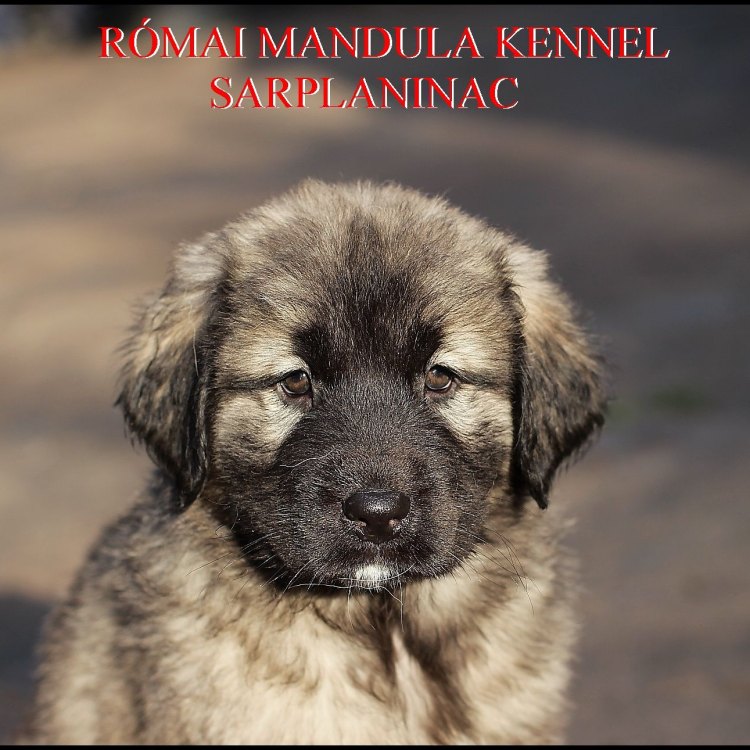
The Majestic and Mighty Sarplaninac: A Look into One of the Most Remarkable Mountain Dogs
Disclaimer: The content provided is for informational purposes only. We cannot guarantee the accuracy of the information on this page 100%. All information provided here may change without prior notice.

